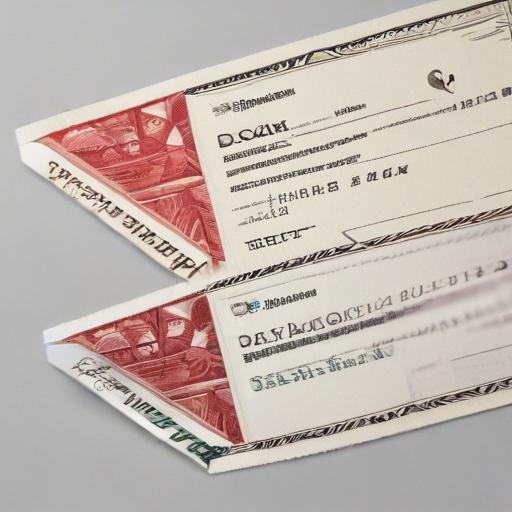Taxpayers are weighing whether to expect another round of relief in 2025 as discussions around a potential fourth stimulus check, tariff rebates, and inflation relief continue to circulate. The latest developments center on a proposed tariff rebate from President Donald Trump, a bipartisan push in Congress, and state-level relief programs, alongside the ongoing process for tracking federal and state tax refunds.
What we know about stimulus checks and relief proposals
– There is no official confirmation of a fourth stimulus check from Congress or the IRS. Social media chatter and unverified sites have circulated hopes of a $2,000 payment, but no formal legislation or IRS guidance supports this claim at this time.
– Historically, the first three stimulus payments followed different eligibility rules and timing. The first checks provided up to $1,200 per person plus $500 per qualifying child; the second checks offered up to $600 per person plus $600 per qualifying child; the third checks provided up to $1,400 per eligible individual with extra amounts for dependents. Deadlines to claim those Recovery Rebate Credits have passed, with the last deadline set for April 15, 2025. Unclaimed payments generally revert to the U.S. Treasury.
– Trump has floated using some government revenue from new tariffs to issue a rebate to taxpayers, a concept described as “a little rebate” to return part of the revenue. A parallel proposal from Senator Josh Hawley named the American Worker Rebate Act of 2025 would also seek to send checks to Americans. Details on who would qualify and the exact amounts have not been finalized.
Understanding the tariff rebate idea and related chatter
– The tariff rebate concept envisions returning some of the revenue generated by new tariffs to taxpayers, potentially along income-based lines, as a form of relief rather than a traditional stimulus payment. It’s important to note that such ideas are proposals and have not become law or received formal approval.
– In the same vein, Trump has previously floated a plan described as a “DOGE dividend,” suggesting a distribution of savings to taxpayers from a government efficiency initiative, but no concrete details or timetable have been provided.
Inflation relief at the state level
– Several states have introduced or issued inflation relief or rebate-type checks to residents affected by higher costs. New York has distributed one-time payments based on income and tax status, with amounts varying (for example, up to $200 for individuals and up to $400 for joint filers earning below certain thresholds).
– Pennsylvania, Georgia, and Colorado have also rolled out or offered similar inflation relief or rebate checks, often tied to property ownership, state tax payments, or income levels. These programs are separate from federal refunds and operate under state rules.
Federal and state tax refunds: how to track
– Federal refunds: If you filed electronically with direct deposit information, refunds typically appear within about 21 days after the IRS processes the return. If you filed a paper return or did not provide banking details, refunds can take several weeks longer. The IRS online tool, Where’s My Refund, helps you track the status, showing stages such as return received, refund approved, and refund sent. The tool requires your Social Security number, filing status, and the exact refund amount. You can also call the IRS refund line for updates.
– State refunds: Most states offer an online portal to track income tax refunds. Availability and timelines vary by state, so check your state’s official tax website for the most accurate information.
Practical guidance for taxpayers
– File promptly and accurately. Even if you have a tax extension or incomplete information, submitting the return to claim any eligible Recovery Rebate Credit for 2021 is important where deadlines permit.
– Save and reconcile information. If you believe you are owed a refund or a credit, keep copies of your tax filings, any notices from the IRS, and documentation of any stimulus-related credits you claimed.
– Be wary of misinformation. While the idea of new relief is discussed, there is no guaranteed timetable or eligibility for a fourth stimulus check or any tariff-based rebate at this moment. Rely on official IRS and state tax authority guidance for accurate information.
Summary and outlook
– The prospect of additional federal stimulus payments or tariff-based rebates remains uncertain and is subject to legislative action. While discussions continue and similar relief programs exist at the state level, no concrete, universally applicable program is in place as of now.
– Taxpayers should monitor official channels for updates on any new relief measures, confirm their eligibility if a program is announced, and use official tools to check refund statuses.
Key takeaways
– No confirmed fourth stimulus check has been enacted; expect official announcements before making plans.
– The tariff rebate and the American Worker Rebate Act of 2025 are proposals under discussion, not enacted law.
– State inflation relief programs exist in some states with varying eligibility and amounts.
– For federal refunds, use the IRS Where’s My Refund tool or the official contact lines; for state refunds, use your state’s tax portal.
– If you’re unsure about a relief offer or payment, verify it through official sources to avoid scams.
Positive note
There is ongoing attention from lawmakers to provide targeted relief to Americans facing higher costs, and any potential programs would be designed with clear eligibility criteria. While nothing is guaranteed, the current discussions reflect a continuing effort to address inflationary pressures in a measured way.
